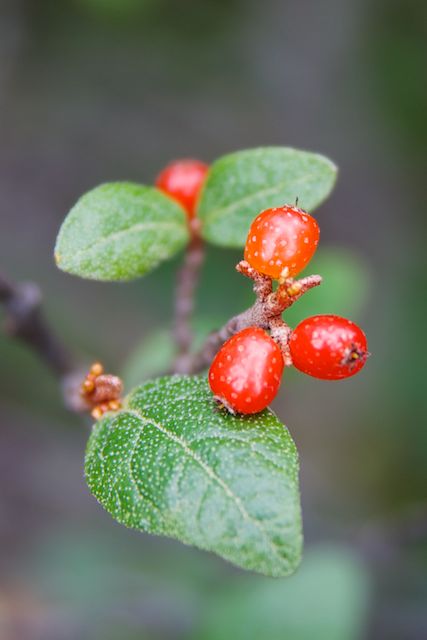After breakfasting in the store next door to Ma Johnsons, we took the bus to nearby Kennicott. (The spelling for the copper mine is sometimes shown as Kennecott). The Kennicott road was stony and rough but only about 5 km long so we were soon getting prepared for our day on the glacier.
We were required to sign a waiver and then we were fitted out with crampons for ice walking.
From the Kennicott guides’ building we had a 3 km walk to the start of the icy bottom section (toe) of the Root Glacier. Our group was initially seven plus two guides, Annie and Cody who were friendly, highly informative and carefully explained the plan for the day’ events.
At the toe of the glacier we attached crampons but before commencing the ice walk, Cody gave us all a demonstration of the best way to cope with climbing and descending slopes particularly if they were steep.
The walk was a gentle climb initially and despite all the ice around us, the air was warm and the bright sunny conditions ideal for seeing the beauty of all the various glacial formations.
There were many small streams flowing across the surface of the Root Glacier and some had carved narrow channels that then disappeared into chasms or ‘worm-holes’ as Cody called them. They are more correctly called ‘moulins’.
With utter confidence in the crampons doing their job, we ascended some steep sections and then followed steep ridges in the ice to a gully where there was a river coming out of a wall of ice. We stopped here for a lunch break and sat on the ice using foam mats and had hot drinks as well as trying the icy glacial water.
The conditions were ideal and some in our group who previously were rugged up with thermals and beanies on were now in tee shirts and putting on more sunscreen.
The vast mass of ice creates high density regions where the ice colour has vrious shades of pale blue through to an inky azure colour. These dark colours were most prominent when peering into crevasses or down worm holes.
On several occasions we were carefully escorted, one at a time, to an edge where some special sight was to be viewed but great danger was there for the inexperienced. One such site was where a fast flowing stream plunged down an ice cliff and into a crevasse that seemed bottomless. Apparently some courageous adventurers lower themselves into this crevasse on ropes and go down into the blue darkness below. It’s a squeeze and with the noise of the rushing water, communication between the top and the ice-climbers below make for extra danger. Not for the faint hearted!!
At another location, Annie dropped a large rock down into a crevasse and on hearing and timing the crash into the ice below, we guessed the depth which turned out to be about 20 metres. Our guides were very safety conscious and we were grateful for their concern as it seemed highly likely that without a guide one could easily die in this precarious environment.
After about two hours of walking on the ice and having reached a high point where the icefalls of the Root Glacier were clearly visible and yet deceptively distant. What appears to be a wall of ice of moderate size is in fact about 3 km high and equally wide.
Donoho Peak that separates Kennicott and Root Glaciers was basked in sunshine but the biggest peak of all in this Wrangell Mountain region, Mount Blackburn (4996 m) was still covered with cloud at its top.
We then retraced our steps and returned to the Kennecott Visitors’ Centre at about 3.00 pm, feeling a little weary after about four hours of hiking and ice walking.
After some refreshments we spent the next three hours visiting the Kennecott Mine processing plant. These ancient buildings and equipment were where the refinement of the copper ore was initially undertaken. The very high grade copper ore (mostly azurite and malachite with limestone as the principal impurity) was mined from the mountain behind Pennecott and brought down in large steel buckets on overhead wires. The processing required crushing and sieving followed by vibrational separation of the limestone on the basis of density variation within a slurry.
Ammonia treatment to form a copper ammine complex was followed by oil/air flotation separation. This ended up with a high grade copper concentrate containing 95% copper compounds that was then transported by train to the Prince William Sound port of Cordova. It was then shipped to Tacoma for reduction to copper metal.
The high grade ore eventually ran out and the plant closed in 1938 after the production of copper metal valued in today’s currency at around five billion US dollars.
Despite its operational demise the huge, multi-storey buildings and much of the equipment are still here although much of it is in a state of disrepair. Apparently the cost of transporting the machinery out of Kennicott would have been financially disastrous.
However, the long term tourist potential has been acknowledged and the progressive restoration of parts of the plant into a museum has been well received.
Our visit to the Kennicott Copper processing plant was highly informative and a very worthwhile adjunct to our day’s glacier walking.
A meal in the pub across the road and some dancing to music from a visiting “blue-grass” band from North Carolina made for an ideal end to a physically demanding but highly exciting day!















